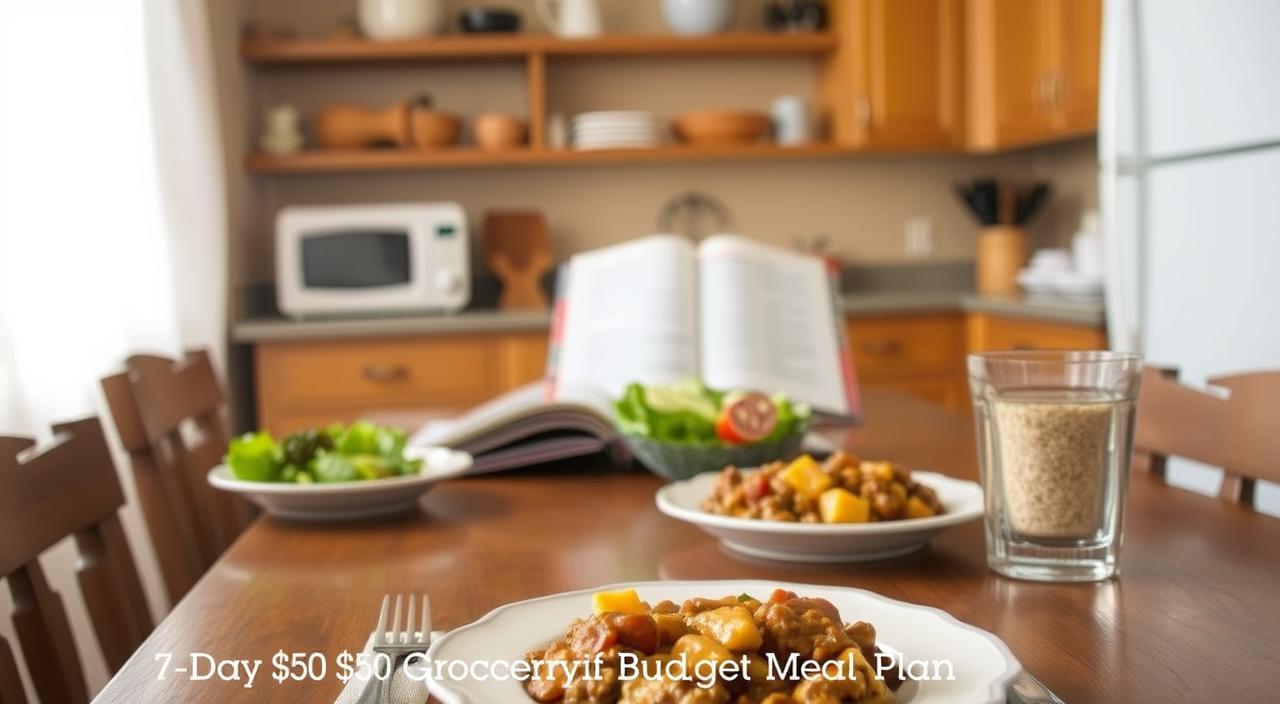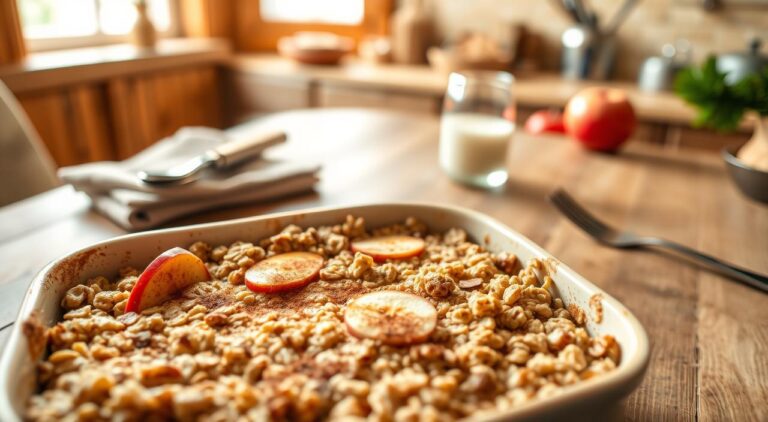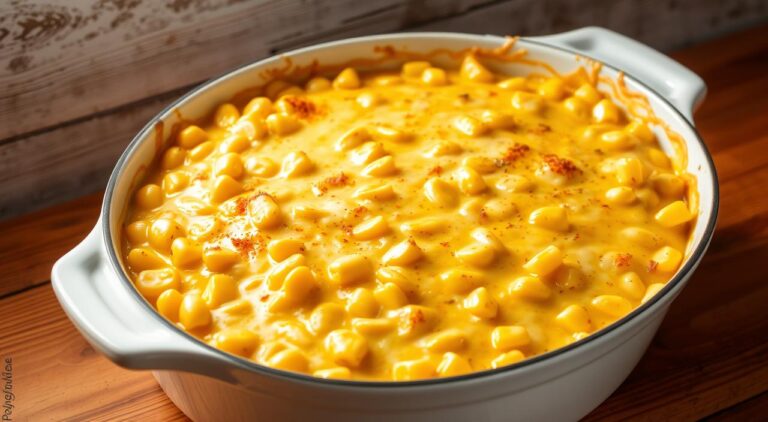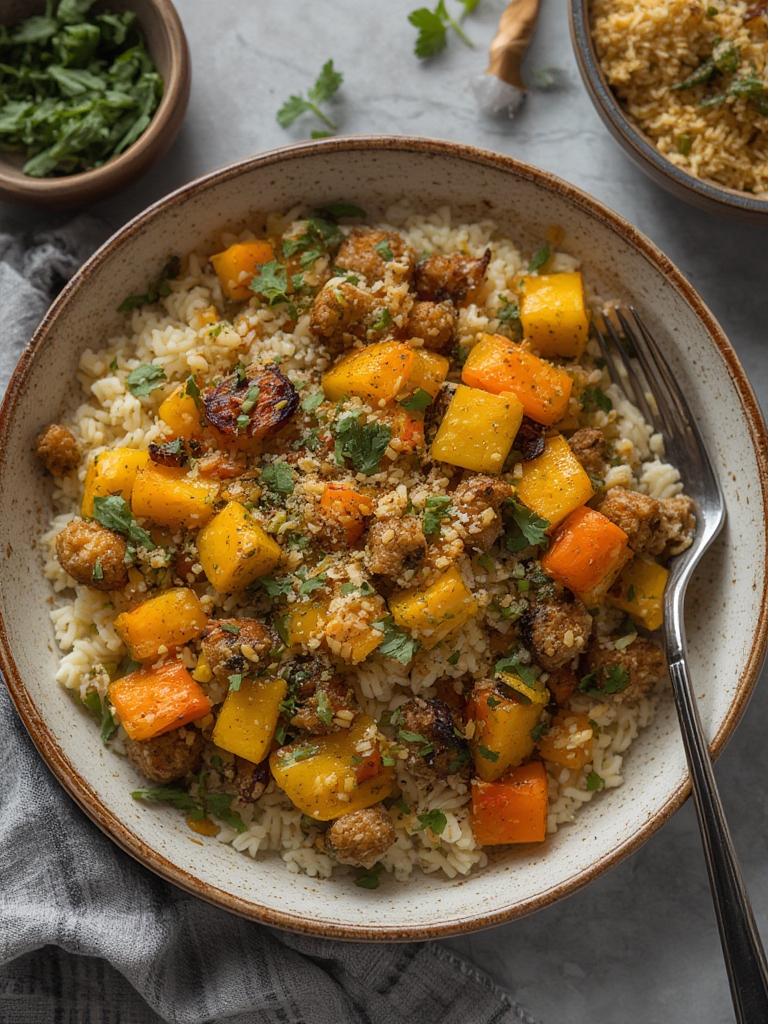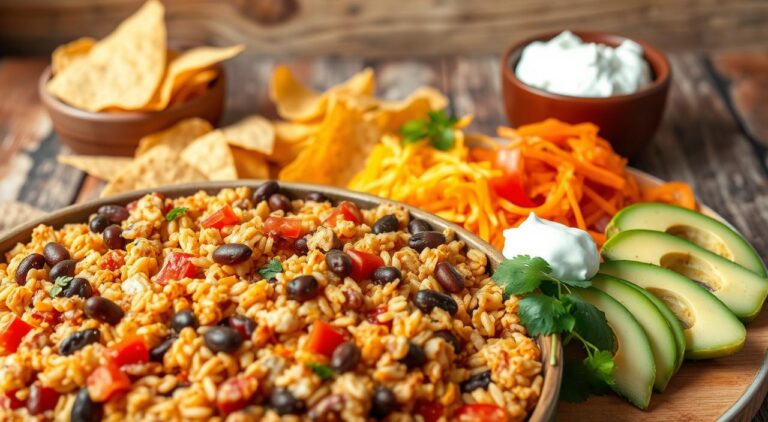7-Day $50 Grocery Budget Meal Plan
Eating healthy doesn’t have to be expensive. Our affordable meal planning guide helps families of four enjoy tasty meals for just $50 a week.
This plan teaches you to shop wisely and save on groceries. You’ll learn how to make healthy meals your family will enjoy. It’s great for busy parents or anyone wanting to save money.
Our simple and practical tips will help you plan a weekly menu. It will match your taste and dietary needs.
Key Takeaways
- Learn how to plan healthy meals on a budget
- Discover smart shopping tips to save money on groceries
- Get a comprehensive 7-day meal plan for a family of four
- Enjoy delicious and nutritious meals without breaking the bank
- Develop healthy eating habits that fit your lifestyle
Overview of the $50 Grocery Budget Meal Plan
Planning meals is key to saving money on groceries. It saves time, cuts down on waste, and makes sure your family eats well.
Importance of Budgeting for Groceries
Managing your grocery budget is vital. It helps control household spending. Buying in bulk can save money, but it’s important to balance spending and saving.
Planning your shopping helps avoid impulse buys. This saves money and reduces waste.
Benefits of Meal Planning
Meal planning saves time and reduces stress. It ensures meals are healthy and balanced. For more tips, check out Allrecipes.
Key benefits include:
- Reduced food waste
- Savings on grocery bills
- Healthier eating habits
How This Plan Works
This $50 meal plan offers a week’s worth of meals for a family. It uses budget-friendly recipes and smart shopping tips. It emphasizes the importance of meal prep.
| Day | Breakfast | Lunch | Dinner |
|---|---|---|---|
| Monday | Oatmeal | Grilled Chicken Sandwich | Pasta with Marinara Sauce |
| Tuesday | Scrambled Eggs | Turkey Wrap | Beef Tacos |
| Wednesday | Yogurt Parfait | Chicken Salad | Grilled Salmon |
By following this plan, you can enjoy a variety of meals while staying within your budget. It’s all about being mindful of your grocery shopping and meal preparation.
Tips for Shopping on a $50 Budget
To make the most of your $50 grocery budget, it’s key to adopt smart shopping habits. Effective budget grocery shopping requires planning, creativity, and some know-how.
Creating a Shopping List
Before you go to the store, plan your meals for the week. Make a list of the ingredients you need. This stops impulse buys and keeps you on budget. Start by shopping your fridge, pantry, and freezer first to use up what you already have.
Having a well-stocked pantry with versatile basics makes meal planning easier and cheaper. Keep staples like rice, pasta, canned beans, and spices on hand.
Using Coupons and Discounts
Coupons and discounts can greatly cut your grocery bill. Look for digital coupons on store websites or through their apps. Also, consider signing up for rewards programs. Some stores offer loyalty programs that help save on weekly groceries.
Using coupons with sales can save a lot. For example, if a product is on sale and you have a coupon, you save even more. Always check the store’s weekly ad to plan your shopping trip.
Buying in Bulk Where Possible
Buying in bulk is a smart move for non-perishable items. Think about grains, nuts, and canned goods in larger quantities. This saves money and cuts down on shopping trips.
When buying in bulk, ensure you have enough storage space. Also, check that the products won’t expire before you can use them. For perishable items, consider splitting bulk purchases with friends or family if you can’t use them before they expire.
Daily Meal Breakdown
Our daily meal suggestions focus on frugal meal planning. They guide you through a week of affordable and satisfying eating. Here’s a breakdown of what you can expect for the first four days.
Day 1: Breakfast, Lunch, Dinner
Begin your day with oatmeal with fruits. It’s a cost-effective breakfast that’s both filling and healthy. For lunch, try a grilled chicken sandwich with mixed greens salad. Dinner could be roast chicken with potatoes and green beans, a classic comfort food that’s budget-friendly.
Day 2: Breakfast, Lunch, Dinner
On the second day, start with scrambled eggs and whole-grain toast. It’s a simple yet satisfying breakfast. For lunch, a chicken Caesar salad is a great option, using leftover chicken. Dinner might feature spaghetti with pasta sauce and frozen broccoli, a meal that’s both affordable and enjoyable.
Day 3: Breakfast, Lunch, Dinner
Day three starts with yogurt parfait with granola and berries. It’s a healthy and delicious breakfast. Lunch could be a turkey and avocado wrap, using affordable ingredients. For dinner, try fried rice with leftover chicken and frozen vegetables, a versatile dish that’s perfect for using up leftovers.
Day 4: Breakfast, Lunch, Dinner
On day four, enjoy pancakes with maple syrup and fresh fruit for breakfast. It’s a treat that’s still budget-friendly. Lunch might be a lentil soup with crusty bread. Dinner could feature beef chili with ground beef, canned beans, and tomatoes, a filling and flavorful meal.
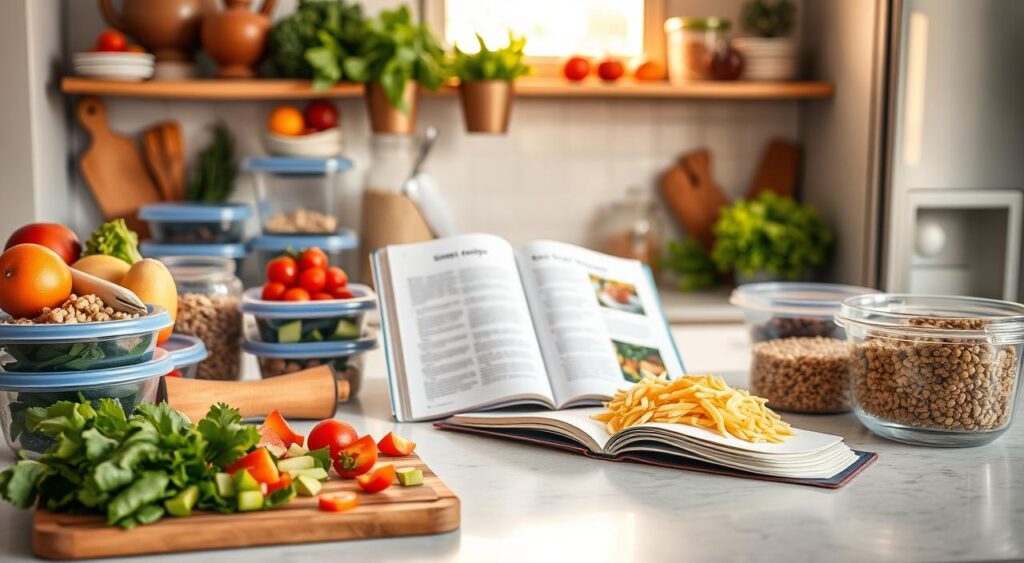
These meal suggestions are designed to be flexible. They allow you to adjust based on your family’s preferences and dietary needs. By planning your meals in advance, you can save money and reduce food waste. This makes the most of your $50 grocery budget.
Grocery List for the Week
Making a detailed grocery list is key to saving money on meals. With a good list, you can stick to your $50 budget. You’ll still get to enjoy tasty and healthy meals all week.
Essential Ingredients
First, gather some basic ingredients for your meals. These are:
- Proteins like boneless chicken thighs and firm tofu
- Grains such as brown rice pasta and white rice
- Canned goods like full-fat coconut milk and chickpeas
- Broth, whether chicken or vegetable, for soups and sauces
Pantry Staples to Include
Also, keep these pantry staples handy. They are:
- Nutritional yeast for added nutrition and flavor
- Raw cashews for snacking or as a base for sauces
- Spices and herbs to enhance the flavor of your meals
These items help you make different meals without needing to go back to the store.
Fresh Produce Recommendations
Fresh fruits and veggies are vital for a good meal plan. For this plan, get:
- 1 lb carrots
- 1 head of celery
- 1 yellow onion
- 4 lemons
- 1 lb chopped kale
- 1 broccoli head
- 1 garlic head
- Fresh herbs like dill and parsley
Choosing these fresh items will help you make many healthy and tasty meals.
Meal Prep Strategies
To save money on groceries, meal prep is key. It saves time, cuts down on waste, and ensures you eat healthy, affordable meals. Spend a few hours each week on meal prep to make cooking easier and keep your diet on track.
Batch Cooking vs. Daily Cooking
Batch cooking means making a lot of one thing at once. This saves time later in the week. Daily cooking, on the other hand, lets you mix things up more. Think about what works best for you.
Benefits of Batch Cooking:
- Reduces cooking time during the week
- Can be more cost-effective by buying ingredients in bulk
- Helps in maintaining consistency in meal quality
Storing Leftovers Efficiently
Storing leftovers right is key to keeping them fresh and safe. Use airtight containers in the fridge or freezer. Remember to label them with the date and what’s inside.
“Repurposing leftovers is a great way to reduce food waste and save money. Consider making chicken stock from leftover chicken bones.”
Time-Saving Techniques
There are ways to prep faster. Prepping ingredients ahead, like chopping veggies or marinating meat, is one. Cooking meals that reheat well, like soups or casseroles, is another.
| Time-Saving Technique | Description | Benefit |
|---|---|---|
| Pre-chopping vegetables | Chop vegetables in advance for quick use in recipes | Saves time during meal preparation |
| Cooking in bulk | Prepare large quantities of a single meal | Reduces cooking time during the week |
| Marinating proteins | Marinate proteins in advance for quicker cooking | Enhances flavor and saves time |
Using these meal prep tips, you can stretch your $50 grocery budget. Enjoy healthy, tasty meals all week long.
Creative Recipes on a Budget
Eating well on a budget is easy with a bit of creativity. With some planning, you can make tasty, healthy meals without spending a lot.
Affordable Breakfast Ideas
Starting your day with a good breakfast doesn’t have to cost a lot. Try oatmeal with fruit and nuts, or scrambled eggs with veggies. These meals are cheap and full of nutrients.
- Oatmeal with banana and almond butter
- Scrambled eggs with spinach and whole wheat toast
- Yogurt parfait with granola and berries
Delicious Lunch Options
For lunch, choose a hearty soup, a sandwich, or a salad. Use beans, lentils, and veggies to make your meals filling and affordable.
| Meal | Main Ingredients | Cost |
|---|---|---|
| Lentil Soup | Lentils, vegetables, broth | $1.50 per serving |
| Grilled Cheese Sandwich | Bread, cheese, butter | $2 per sandwich |
| Quinoa Salad | Quinoa, mixed vegetables, dressing | $3 per serving |
Hearty Dinner Recipes
Dinner can be both filling and budget-friendly. Try roast chicken with potatoes and green beans, or beef chili with ground beef and tomatoes. These are great choices.
Roast Chicken with Potatoes and Green Beans: This classic dish is simple to make. You can add your favorite herbs and spices to it.

By adding these creative recipes to your meal plan, you can enjoy a variety of tasty meals without overspending.
Addressing Common Challenges
Planning meals on a $50 budget can be tough. You might face issues like food waste, lack of motivation, and boring meals. Meal planning helps, but these problems can stop you.
Dealing with Food Waste
Food waste is a big problem for budget meal planners. A person shared that impulse buys often go to waste. To fight this, try repurposing leftovers and planning meals with what you have.
“Reducing food waste not only saves money but also contributes to a more sustainable lifestyle.”
Here are some tips:
- Make a shopping list to avoid impulse buys
- Get creative with leftovers
- Freeze items before they expire
Staying Motivated to Plan Meals
It’s key to stay motivated for meal planning. Mix up your meals and try new recipes. Get your family involved to make it fun.
Here’s how to stay excited:
- Explore new cuisines and cooking methods
- Plan themed dinner nights
- Make meal planning a weekly tradition
Keeping Meals Interesting
Meal boredom can kill your motivation. Try new flavors and ingredients. Look for ideas in cookbooks, blogs, or social media.
Here are some ideas:
- Play with spices and seasonings
- Use seasonal produce in your meals
- Have a “surprise meal” night with what you have
Adjusting the Plan for Dietary Needs
Creating a meal plan that fits everyone’s needs is easy and affordable. You can make changes for vegetarians, those with gluten intolerance, or families with different tastes. Adjusting your $50 grocery budget meal plan is simple.
Options for Vegetarians
Vegetarians need plant-based proteins. Add lentils, chickpeas, and tofu to your meals. Here are some budget-friendly ideas:
- Chickpea and vegetable stir-fry
- Quinoa salad with roasted vegetables
- Lentil soup with whole grain bread
These meals are tasty, nutritious, and won’t empty your wallet.
Gluten-Free Alternatives
For gluten-free diets, use rice, quinoa, and corn instead of gluten. Here are some budget-friendly options:
- Grilled chicken with roasted vegetables and quinoa
- Gluten-free pasta with marinara sauce and sautéed vegetables
- Stir-fry with rice, mixed vegetables, and your choice of protein
These choices keep your budget in check while meeting gluten-free needs.
Suitable Choices for Families
When cooking for families, consider everyone’s tastes and dietary needs. Involving everyone in meal planning ensures everyone’s preferences are considered. Here are some tips:
- Plan meals around what’s on sale at the grocery store
- Make meals that can be customized, like tacos or salads
- Cook in bulk and save leftovers for later
These strategies help create a meal plan that’s both affordable and enjoyable for the whole family.
With a few simple changes, your meal plan can meet everyone’s dietary needs. This makes mealtime more fun and helps keep your diet healthy and balanced on a budget.
Conclusion: Making the Most of Your $50 Grocery Budget
Efficient meal planning is key to saving money on groceries. By following this 7-Day $50 Grocery Budget Meal Plan, you can create healthy and delicious meals for your family while staying within your budget.
Key Takeaways
To maximize your savings, remember to create a shopping list, use coupons and discounts, and buy in bulk where possible. Meal prep strategies like batch cooking and storing leftovers efficiently can also help reduce food waste and save time.
Future Meal Planning
As you continue to plan your meals, get creative with leftover bits and pieces in your fridge to minimize food waste. This approach not only saves money but also fosters a more sustainable cooking habit.
Share Your Experiences
We invite you to share your experiences with meal planning on a budget. Your feedback can help others who are looking for practical tips and strategies to make the most of their grocery budget.
FAQ
How can I save money on groceries with a budget?
To save money, make a shopping list and use coupons. Buying in bulk is also smart. This way, you stay within your budget and avoid wasting food.
What are some affordable meal planning strategies?
Affordable strategies include meal prepping and using leftovers. Planning meals around seasonal produce is also wise. It saves time and money and cuts down on waste.
How can I adjust the meal plan for dietary needs?
For dietary needs, look for vegetarian or gluten-free options. Choose meals that fit your family’s needs. You can also swap ingredients and recipes to suit everyone.
What are some tips for dealing with food waste?
Plan meals with what you already have at home. Use leftovers and compost food scraps. Freezing bread and vegetables is another good idea.
How can I stay motivated to plan meals?
Involve your family in meal planning. Try new recipes and make it fun. Find inspiration online or in cookbooks to keep things interesting.
What are some budget-friendly grocery shopping tips?
Shop sales and buy in bulk. Use cashback apps too. Plan meals around what’s on sale to save money.
Can I customize the meal plan to suit my family’s tastes?
Yes, customize the meal plan by swapping ingredients and adjusting portions. This way, you create a plan that fits your family’s preferences.
How can I make meal prep more efficient?
Batch cook and store leftovers well. Use one-pot meals and prep ingredients ahead of time. These tips save you time during the week.

